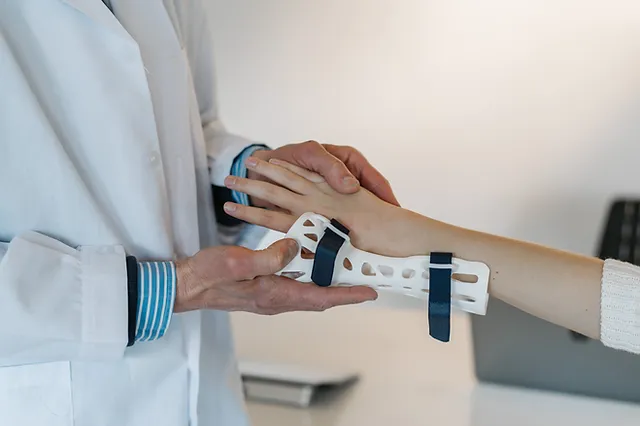
The Crucial Role of Splints in Post-Surgery Recovery: A Comprehensive Guide
Introduction:
After undergoing surgery, the journey to recovery is a critical phase that demands careful attention and effective support. One key element in this process is the use of splints, which play a vital role in protecting and assisting various types of surgical interventions. In this comprehensive guide, we’ll explore the importance of splints in post-surgery recovery and delve into the specific operations that often require splinting.
The Role of Splints in Post-Surgery Protection:
1. Stabilizing Surgical Sites:
– Splints provide essential stabilization to surgical sites, preventing unnecessary movement that could impede the healing process.
– They are particularly valuable for orthopedic surgeries, such as joint replacements or bone fractures, where maintaining the correct alignment is crucial.
2. Reducing Strain on Muscles and Joints:
– Post-surgery, muscles and joints may be vulnerable to strain. Splints help distribute pressure evenly, reducing the strain on these areas during the recovery period.
– This is especially beneficial for individuals who have undergone procedures like tendon repairs or ligament reconstructions.
3. Preventing Complications:
– Splints aid in preventing complications such as joint contractures, where joints may become permanently fixed in a bent or straight position.
– They contribute to the prevention of postoperative complications, ensuring a smoother recovery process.
Operations That Often Require Splints:
1. Joint Replacements:
– After joint replacement surgeries, such as hip or knee replacements, splints are commonly used to support the affected limb and maintain proper alignment during the initial healing phase.
2. Fracture Repairs:
– Patients recovering from bone fractures often benefit from splints to immobilize the injured area and facilitate optimal healing. This is especially true for complex fractures that require precise alignment.
3. Tendon or Ligament Repairs:
– Surgeries involving tendon or ligament repairs, like those for torn ACLs or rotator cuffs, often necessitate the use of splints to protect the repaired structures and facilitate rehabilitation.
4. Spinal Surgeries:
– Certain spinal surgeries, such as spinal fusions or laminectomies, may involve the use of splints to support the spine during the early stages of recovery and prevent unnecessary stress on the surgical site.
5. Hand and Wrist Surgeries:
– Procedures on the hands and wrists, including carpal tunnel releases or tendon repairs, frequently involve splints to immobilize and protect these delicate structures.
Best Practices for Using Splints in Post-Surgery Recovery:
1. Consultation with Healthcare Professionals:
– The decision to use a splint post-surgery should always be made in consultation with healthcare professionals, including surgeons and physiotherapists.
2. Customization for Individual Needs:
– Splints should be customized to meet the specific needs of the patient and the nature of the surgery. A one-size-fits-all approach may not be effective in promoting optimal recovery.
3. Regular Monitoring and Adjustments:
– Regular monitoring of the splint’s effectiveness is crucial. Healthcare professionals should make necessary adjustments based on the patient’s progress and any changes in the surgical site.
4. Incorporating Physical Therapy:
– Splint use is often complemented by physical therapy to ensure a comprehensive approach to recovery. Physical therapists guide patients in exercises that promote flexibility and strength while taking the splint into account.
Conclusion:
In the realm of post-surgery recovery, the role of splints cannot be overstated. These supportive devices contribute significantly to the protection and stabilization of surgical sites, fostering an environment conducive to optimal healing. From joint replacements to complex fracture repairs, understanding the need for splints in specific surgical contexts enhances the overall recovery process.
As patients embark on their post-surgery journeys, the integration of well-designed and properly implemented splints stands as a valuable component in promoting successful recovery outcomes. Always consult with healthcare professionals to determine the most suitable approach for individual cases, ensuring that splints are utilized effectively and tailored to the unique requirements of each patient’s surgical intervention.


